I owe this recipe for amazingly delicious latkes to my beloved Grandma. Golden brown and crispy on the outside, tender and savory on the inside, they're incredibly good.
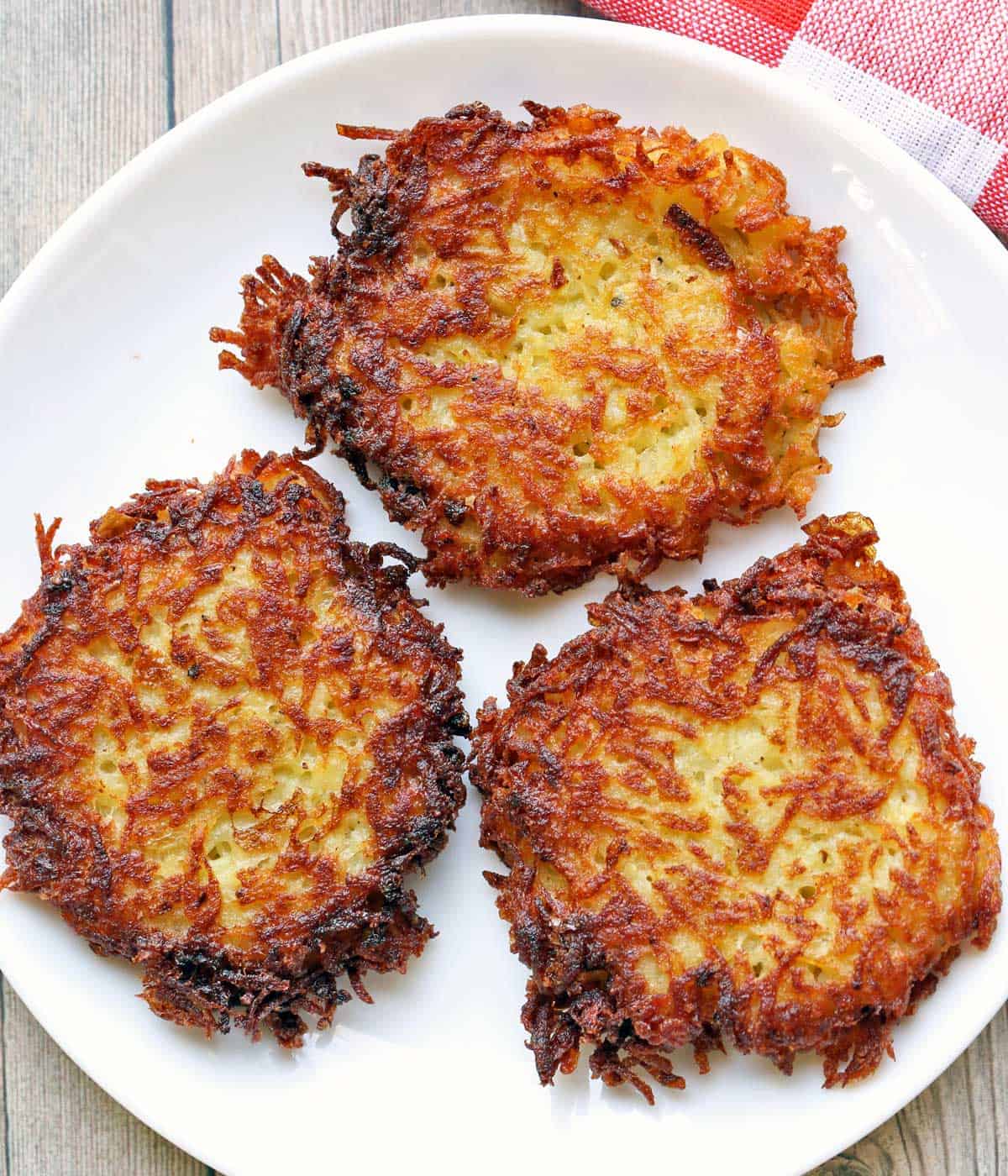
While potatoes are not something I eat daily, I make this traditional recipe for Hanukkah. We all partake - the kids a bit more, my husband and I just one or two. After all, it's a beloved holiday tradition. I've been making these latkes for many years now. They are excellent, and I consider this a foolproof recipe. I hope you enjoy them as much as we do!
Ingredients

See the recipe card for exact measurements. Here are my comments on the ingredients.
- Onion: I use a large yellow onion.
- Potatoes: I use Yukon Gold or Russet potatoes. I like Yukon Gold's flavor, but Russet's high starch content helps keep the latkes from falling apart.
- Eggs: I use large eggs in most of my recipes, including this one.
- Salt and pepper: I use sea salt and freshly ground black pepper.
- Garlic powder: Alternatively, use a teaspoon of fresh minced garlic.
- Avocado oil: A good alternative is ghee.
Variations
- Add ¼ cup of grated Parmesan. It adds flavor and also absorbs extra liquid. This is certainly non-traditional, but delicious!
- You can use green onions instead of yellow onions. The latkes shown in the photo below were made with half a cup of chopped green onions.

Instructions
The detailed instructions and step-by-step photos are included in the recipe card. Here's a quick overview.
Shred the onion and potatoes. It's easy to do in your food processor. Drain them well (really well!) and mix them with eggs and spices.

Drop spoonfuls of the mixture into hot oil and fry on both sides until crispy.
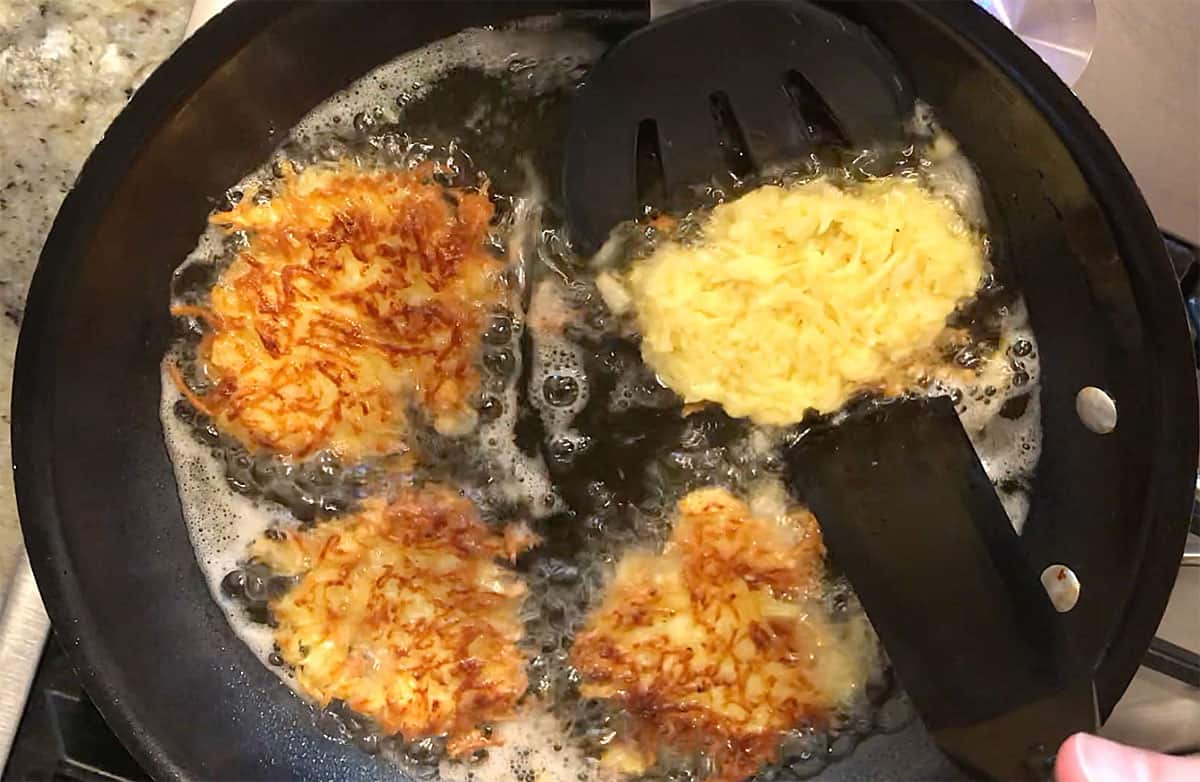
Place the latkes on paper towels to drain, then serve them with your desired toppings.
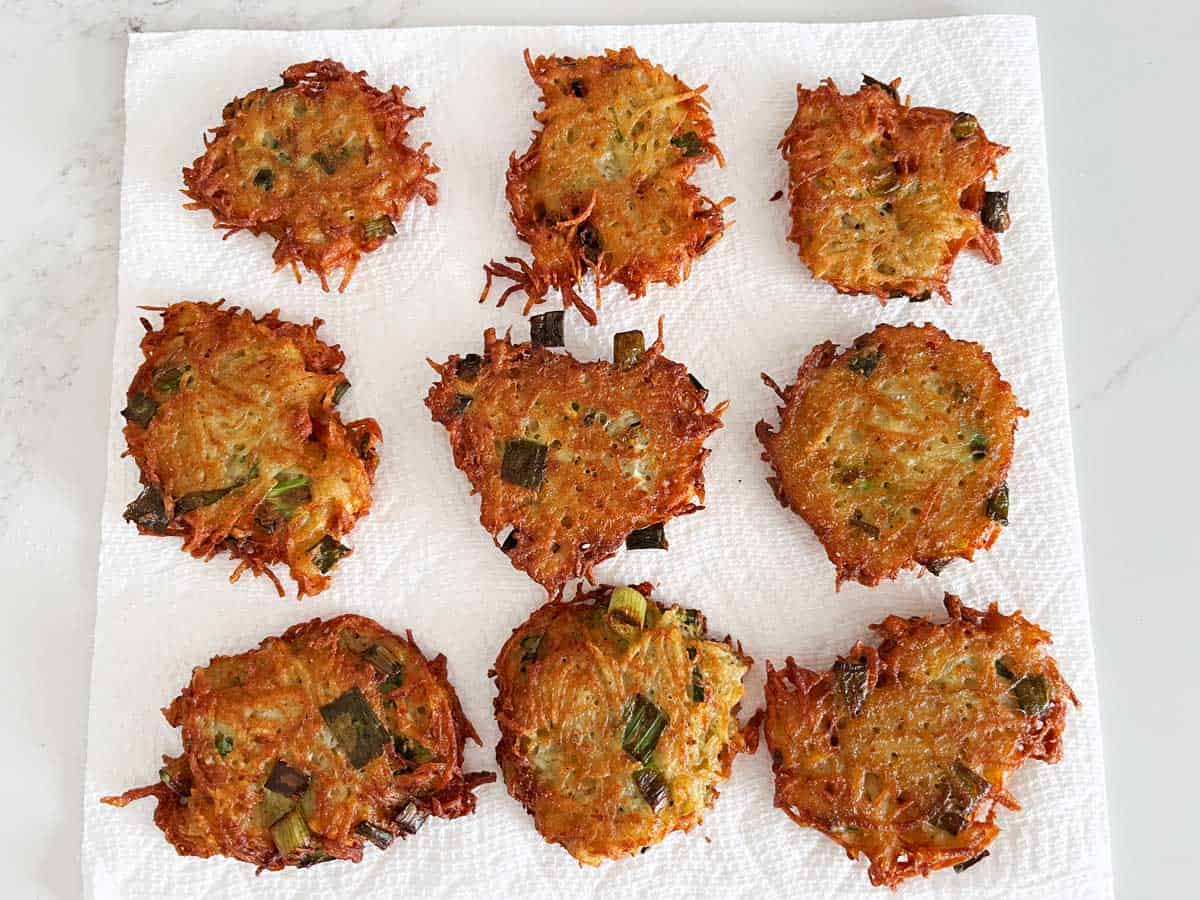
So good! Thank you for the tip on removing water. I used to add flour to my latkes. These are much better.
Bracha
Read more comments
Recipe Tips
Eliminate Liquid
Extract as much liquid from the potato/onion mixture as possible by placing it in a colander and repeatedly pressing it with your hands or the back of a large spoon. The drier the mixture, the crispier the latkes will be. Here's the water left in the bowl after draining the potatoes - that's a lot of water!
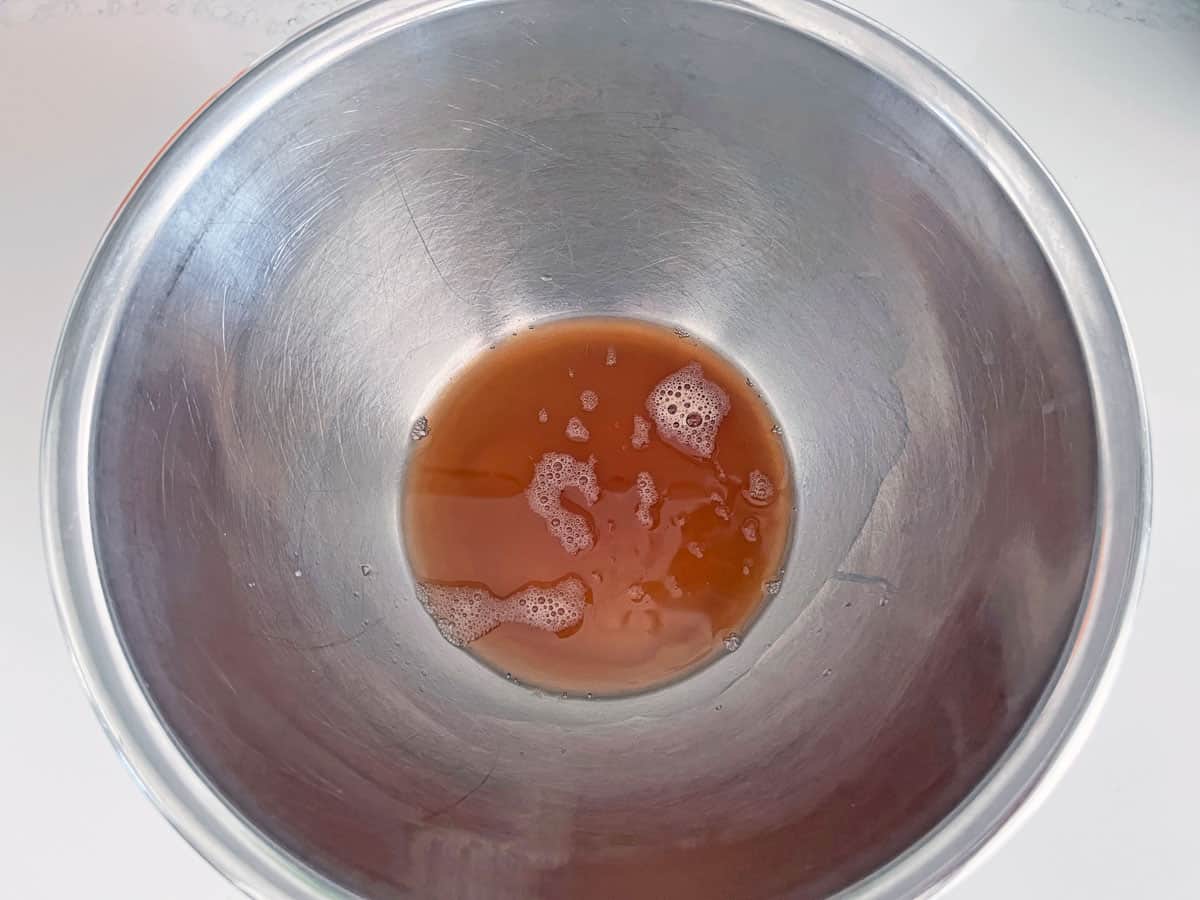
Don't Worry About Discoloration
The shredded potatoes will quickly darken. That's expected and will not negatively affect the pancakes' taste or texture:
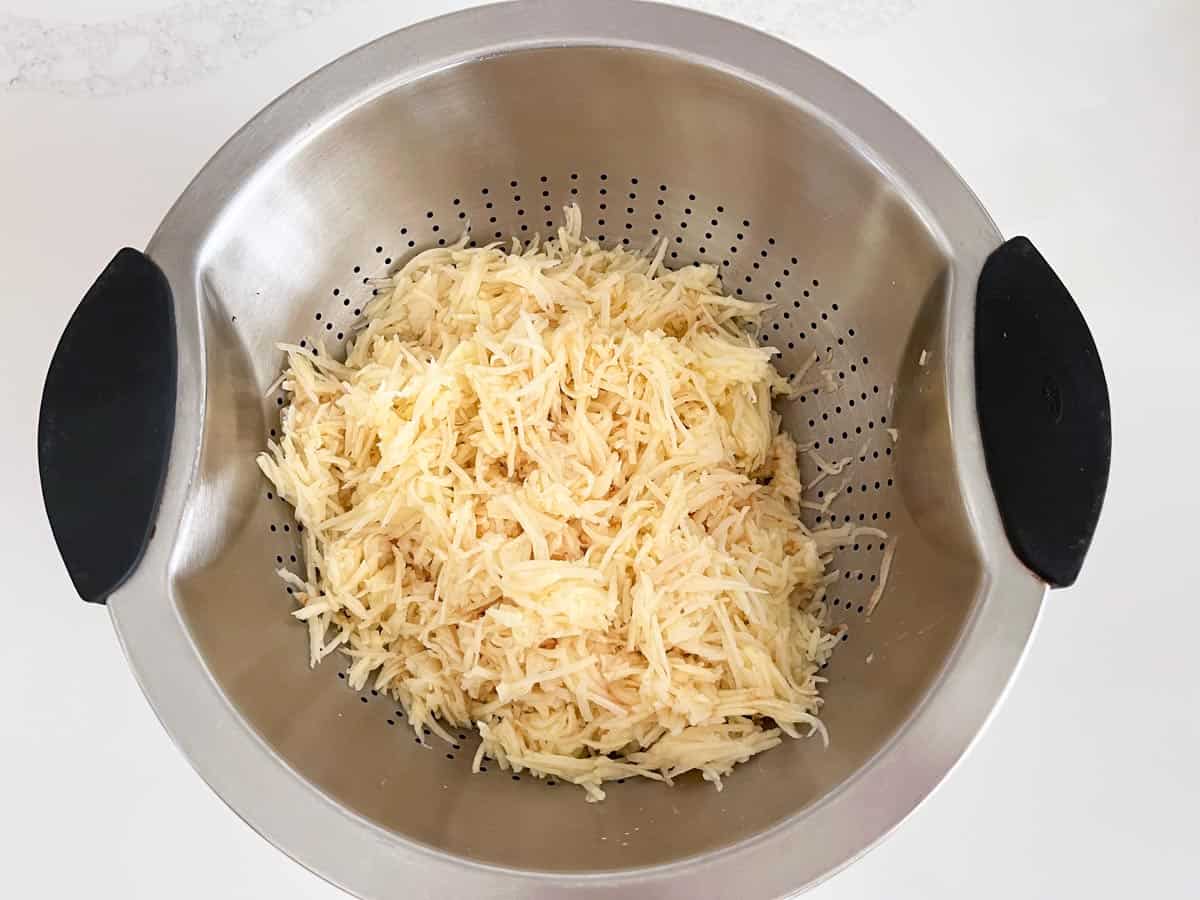
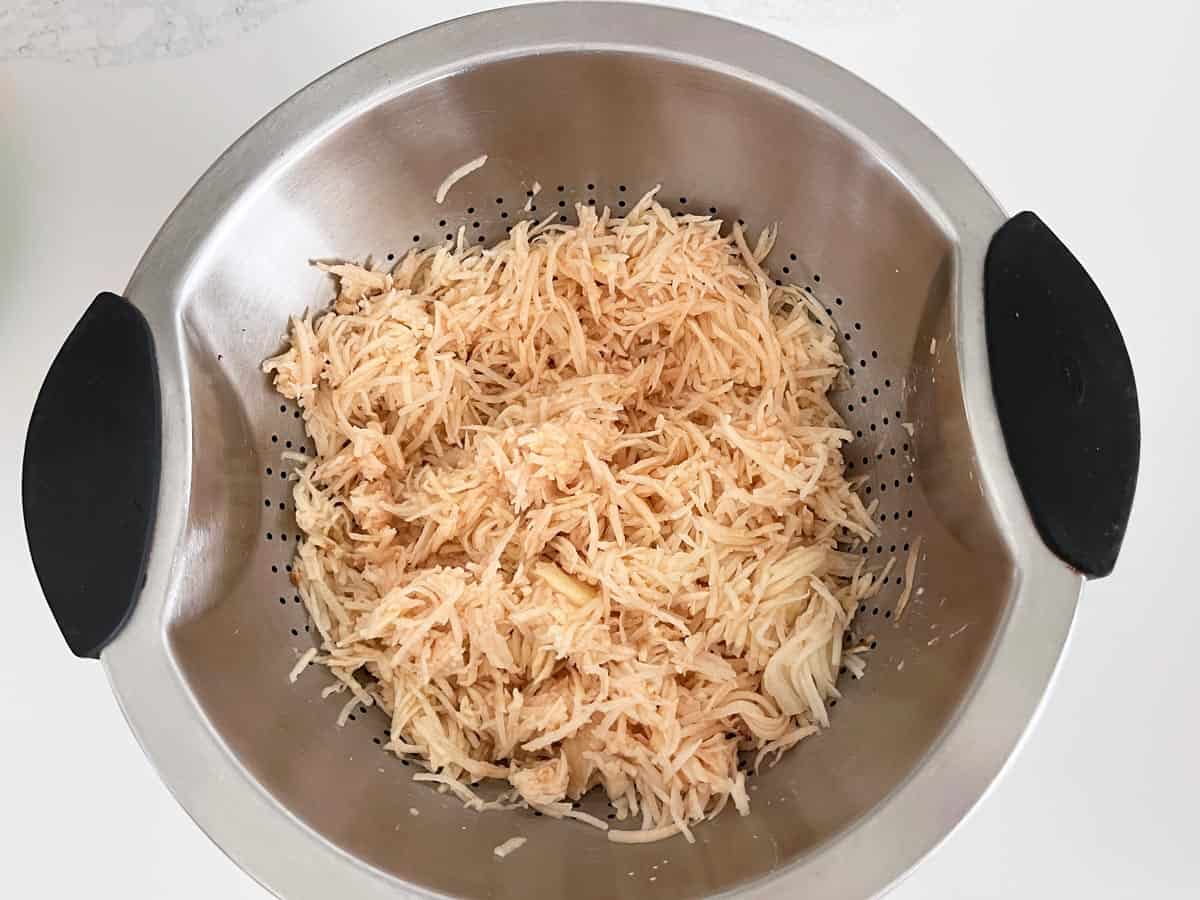
Make Them Crispy
You want the lacy edges to be brown. Proper brown, not golden brown. The middle can be golden brown. If you flip them and they're still pale, you can flip them back and keep cooking until they're browned:
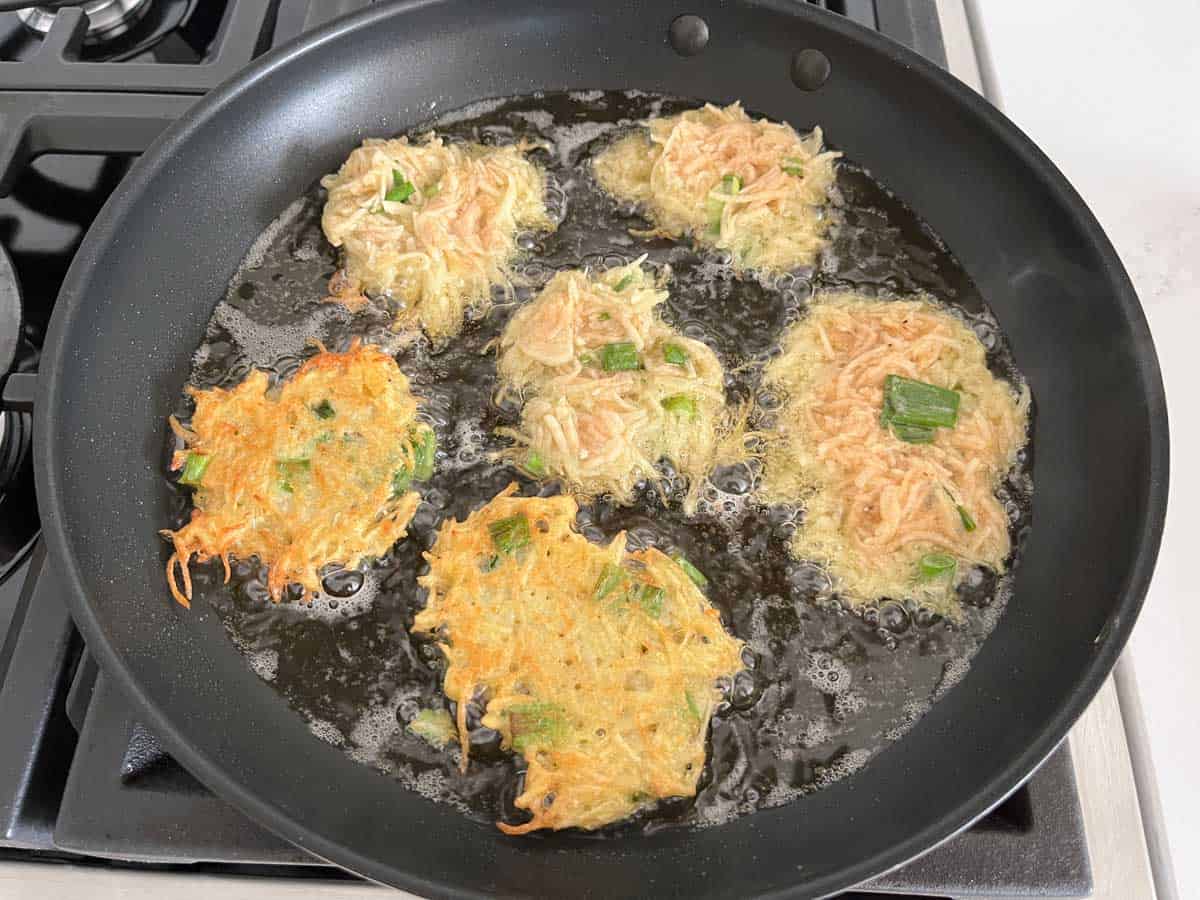
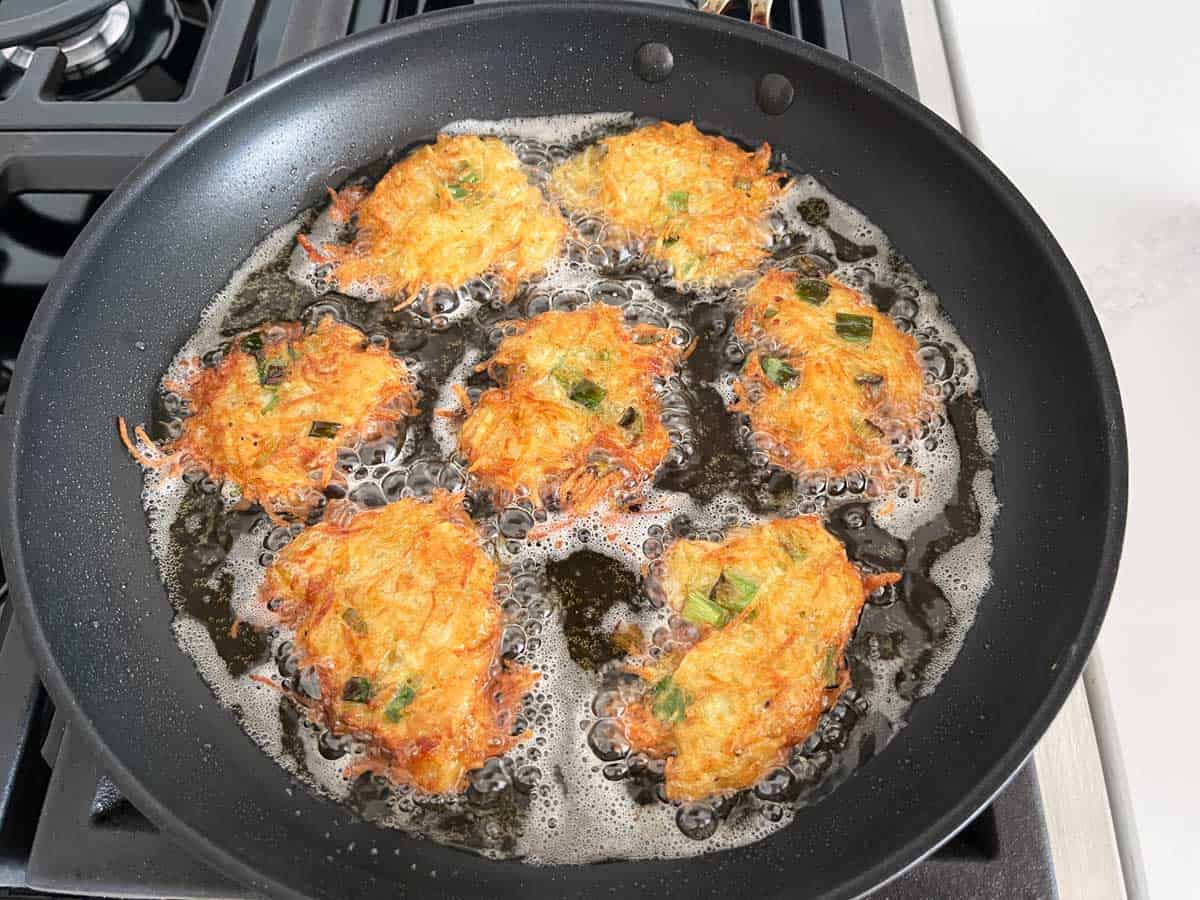
Some Latkes Will Cook Faster
Remove them to paper towels and add more of the mixture to the skillet. It's OK to add more uncooked latkes while some of them are still cooking in the skillet:
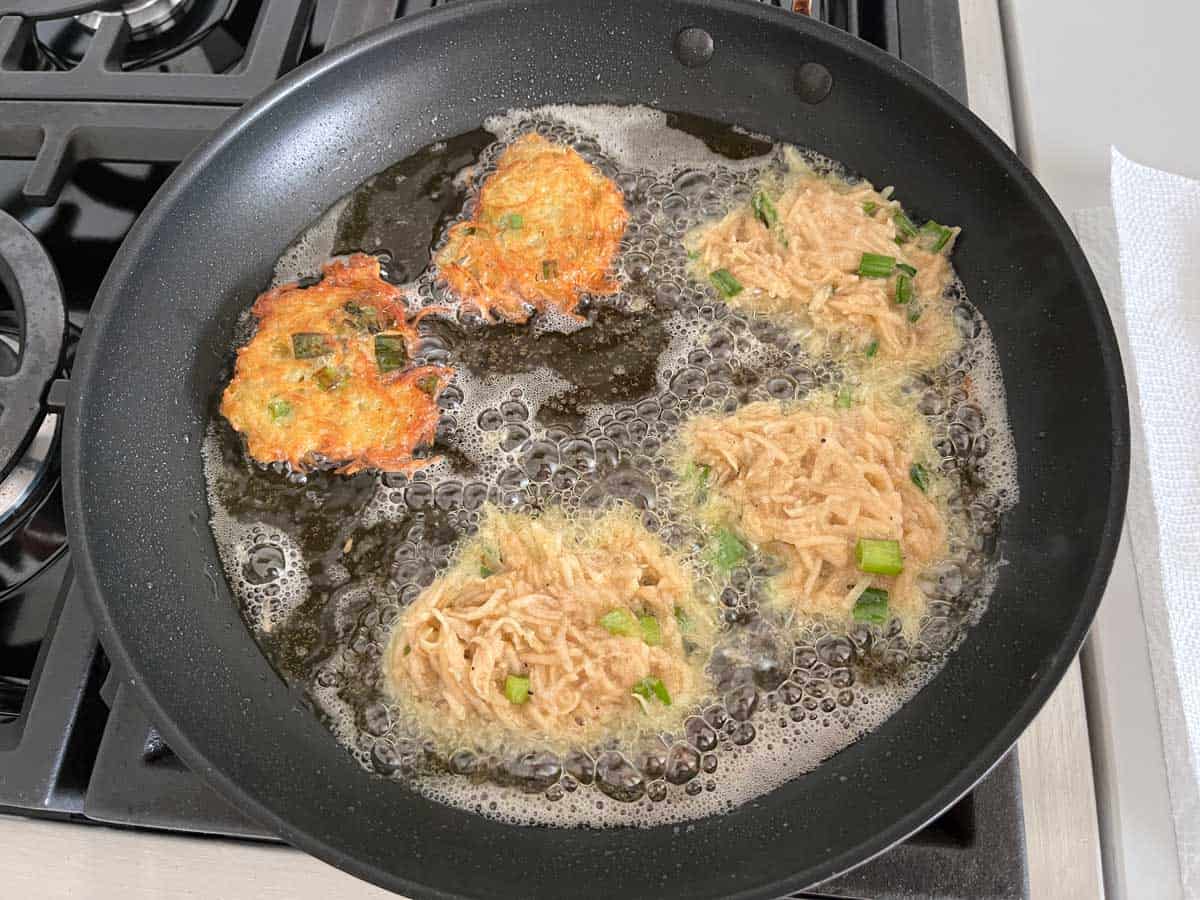
Use Two Skillets or a griddle
You can use a double-burner griddle or two skillets to cut the frying time in half, as shown in the photo below:

Recipe FAQs
I like Yukon Gold potatoes. Russet potatoes are also a great option. Their high starch content makes for sturdier pancakes less likely to fall apart, but I like the flavor of Yukon Gold potatoes better. As long as you drain the water thoroughly, they crisp up just fine and don't fall apart.
Sadly, no. You shouldn't use frozen hash brown potatoes in this recipe. I tried, and it's just not the same. The latkes turn out much less flavorful and quite soggy. It's best to use fresh potatoes.
There's no need for flour. The flour is supposed to help bind the ingredients and prevent the latkes from falling apart, but latkes made without flour taste significantly better. If you thoroughly drain the potato/onion mixture, the pancakes will crisp up and not fall apart.
Yes. Drop spoonfuls of the potato mixture onto two parchment-lined, rimmed baking sheets, forming 24 thin pancakes. Press with your hands to flatten the patties while keeping their shape. Generously spray the latkes with oil. Bake them in a preheated 450°F oven for about 15 minutes per side. Serve immediately. The photo below shows the baked version.
You can, although they taste best fresh out of the skillet. Having said that, I often finish making them an hour before dinnertime and keep them in a warm (170°F) oven until it's time to serve them.
Serving Suggestions
Latkes are traditionally served with sour cream and applesauce. You can also serve them with salsa or hot sauce. However, they are delicious on their own, so they don't need any of these toppings. Here's how I like to serve them, with bowls of sour cream, applesauce, and salsa:
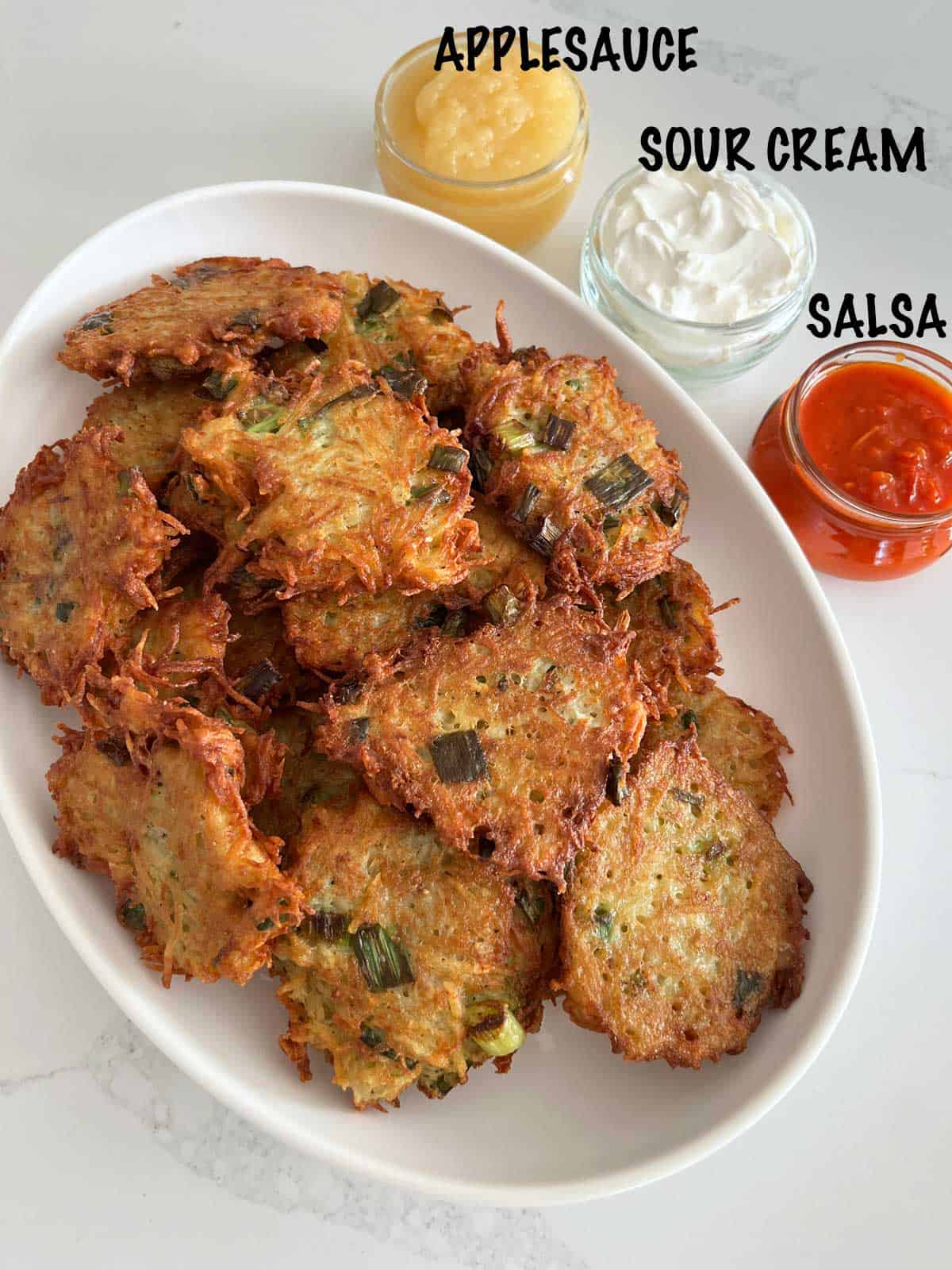
Storing and Using the Leftovers
You can keep the leftovers in an airtight container in the fridge for 3-4 days. Reheat them uncovered in a 350°F oven. They won't be as good as fresh, but they will still be quite good.
You can also freeze the leftovers in a single layer in freezer bags. I sometimes use the leftovers as a side dish. In the photo below, I served them with London Broil steak, veggies, and pickles:
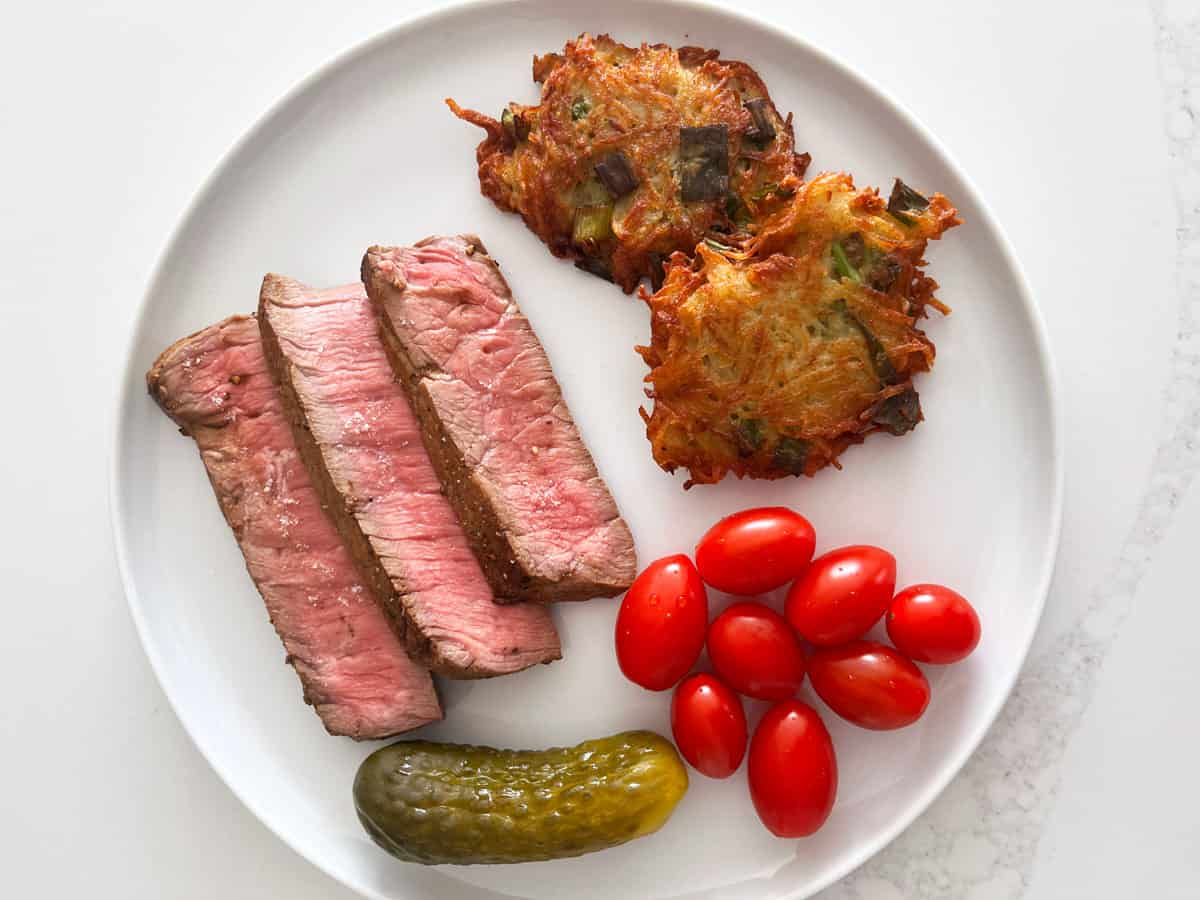
Recipe Card
Crispy Latkes Recipe
Video
Ingredients
- 1 large onion - 8 ounces
- 2 pounds Yukon Gold potatoes - or Russet potatoes, peeled
- 2 large eggs
- 1 teaspoon sea salt
- ½ teaspoon black pepper
- ½ teaspoon garlic powder
- 16 fluid ounces avocado oil
Instructions
- Set the oven to warm (170°F). Place a cooling rack on a baking sheet.
- Peel the onion, quarter it, and process it in the food processor until finely chopped. Place it in a colander, and place the colander on top of a bowl.1 large onion
- Using the fine shredding disc of your food processor, shred the potatoes. Place them in the colander.2 pounds Yukon Gold potatoes
- Use your clean hands or a large spoon to mix the onion and potatoes. Press on the mixture with your hands or the back of a large spoon repeatedly to extract as much liquid as you can. This is the single most important step in this recipe. The drier the mixture, the crispier the latkes and the less risk of them falling apart. Resist the temptation to add flour to help absorb the liquid. It is unnecessary and will result in suboptimal results.
- Whisk the eggs, salt, pepper, and garlic powder in a small bowl.2 large eggs, 1 teaspoon sea salt, ½ teaspoon black pepper, ½ teaspoon garlic powder
- Place the drained potatoes and onions in a large bowl (you can use the bowl that collected the liquids after pouring them out and wiping the bowl with a paper towel). Add the egg mixture to the drained onion/potato mixture and use a fork to mix well.
- Heat the oil in a 12-inch nonstick skillet over medium-high heat until hot but not smoking. The oil should cover the bottom of the skillet and be about ½ inch deep. The oil is hot enough when it gently bubbles around a toothpick placed in the skillet.16 fluid ounces avocado oil
- Spoon about 2 tablespoons of mixture per pancake into the skillet, pressing on them a little with a spatula to flatten. If using a 12-inch skillet, you'll be able to fry 4 latkes at a time. I fry in 2 skillets simultaneously - it cuts the frying time in half and is quite doable.
- Cook the latkes until their undersides are browned, about 5 minutes. Turn them over and cook until the other side is browned, about 5 more minutes. If the oil becomes too hot, lower the heat to medium. For crispy latkes, you'll want the lacy edges to be brown. Proper brown, not golden brown. The middle can be golden brown.
- Transfer the cooked latkes to paper towels to drain, then place them on the prepared baking sheet and keep them in the warm oven while you finish frying more batches. Remix the egg/potato/onion mixture between batches. It tends to separate.
- When all the latkes are cooked, serve them with sour cream, applesauce, and (if desired) salsa.
Notes
- I typically use Yukon Gold potatoes. Russet potatoes have an advantage, though - they have a high starch content, which helps the latkes crisp up and also helps prevent them from falling apart when you cook them.
- Don't use frozen hash brown potatoes in this recipe. I tried, and it's just not the same. The latkes turn out much less flavorful and quite soggy. It's best to use fresh potatoes.
- The shredded potatoes will quickly darken. That's expected and will not negatively affect the pancakes' taste or texture.
- Some of the latkes will cook faster. Remove them to paper towels and add more mixture to the skillet. It's OK to add more uncooked mixture while some latkes are still cooking in the skillet.
- Baking instructions: Drop spoonfuls of the potato mixture onto two parchment-lined, rimmed baking sheets, forming 24 thin pancakes. Press with your hands to flatten the patties while keeping their shape. Generously spray the latkes with oil. Bake them in a preheated 450°F oven for about 15 minutes per side.
- You can keep the leftovers in an airtight container in the fridge for 3-4 days. Reheat them in a 350°F oven. They won't be as good as fresh, but they will still be quite good. You can also freeze the leftovers in a single layer in freezer bags.
- This is not a low-carb recipe.
Nutrition per Serving
Save this Recipe!
We will also add you to our weekly newsletter. Unsubscribe anytime. See healthyrecipesblogs.com/privacy/ to learn how we use your email.
Disclaimers
Most recipes are low-carb and gluten-free, but some are not. Recommended and linked products are not guaranteed to be gluten-free. Nutrition info is approximate. Please verify it independently. The carb count excludes non-nutritive sweeteners. Please read these Terms of Use before using any of my recipes.

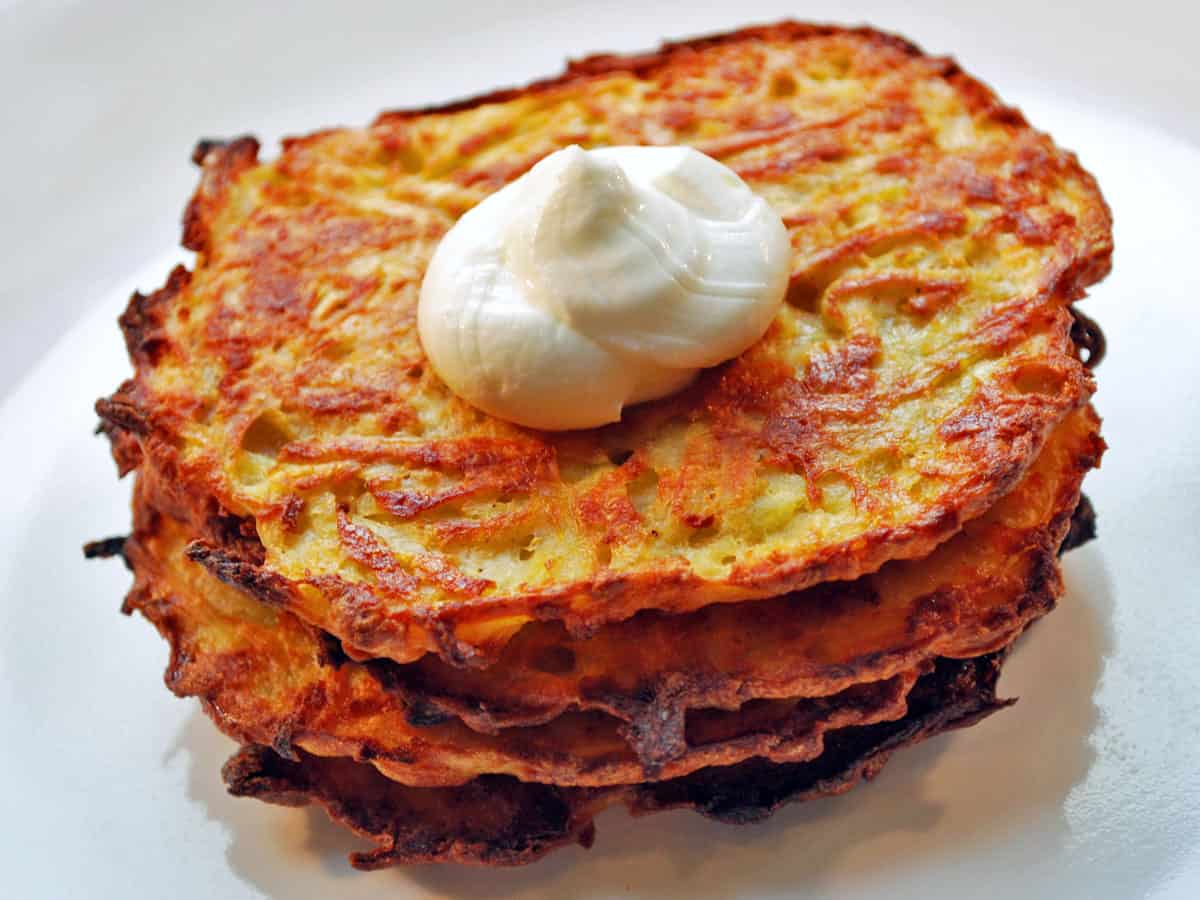
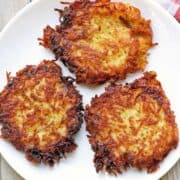

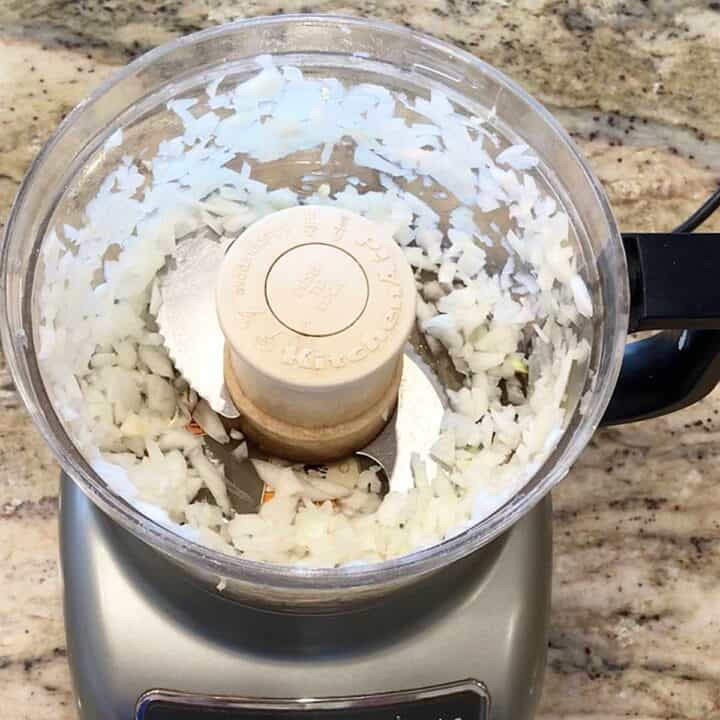
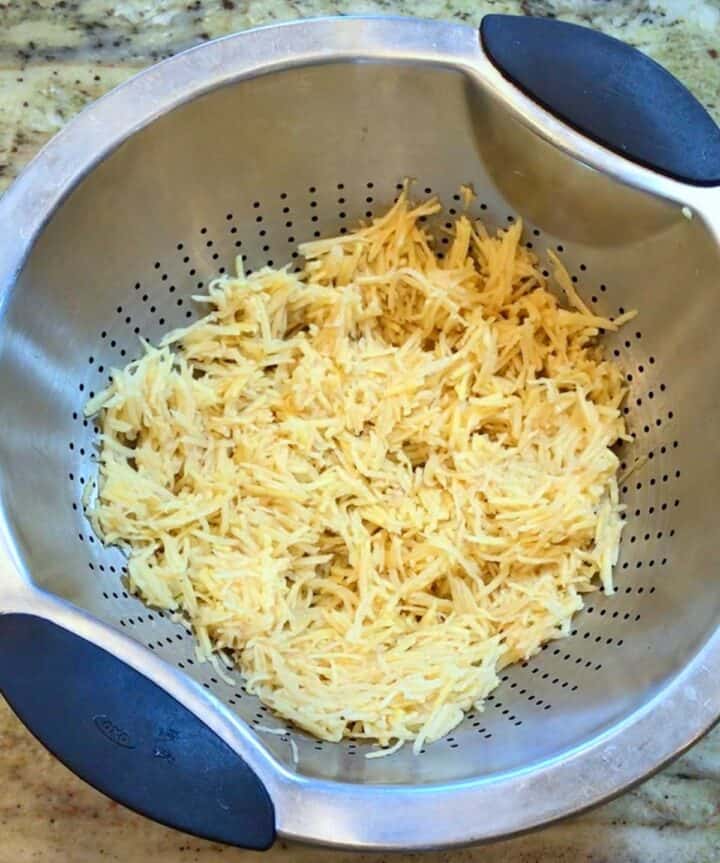
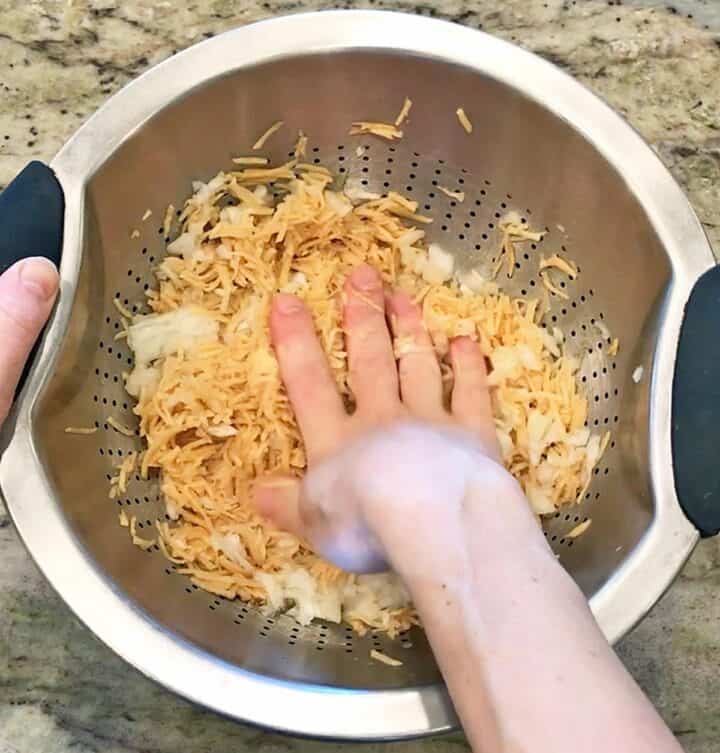
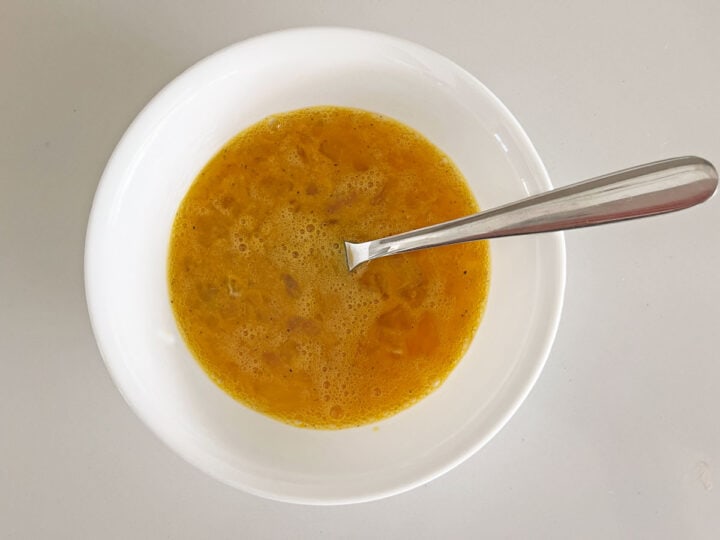
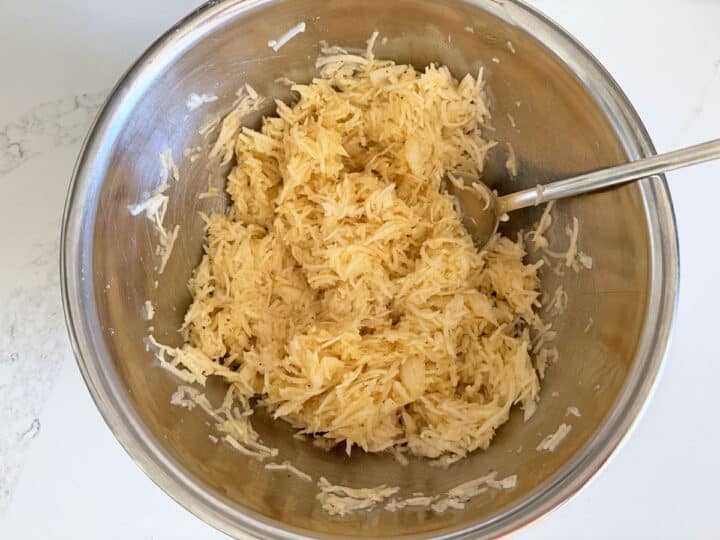
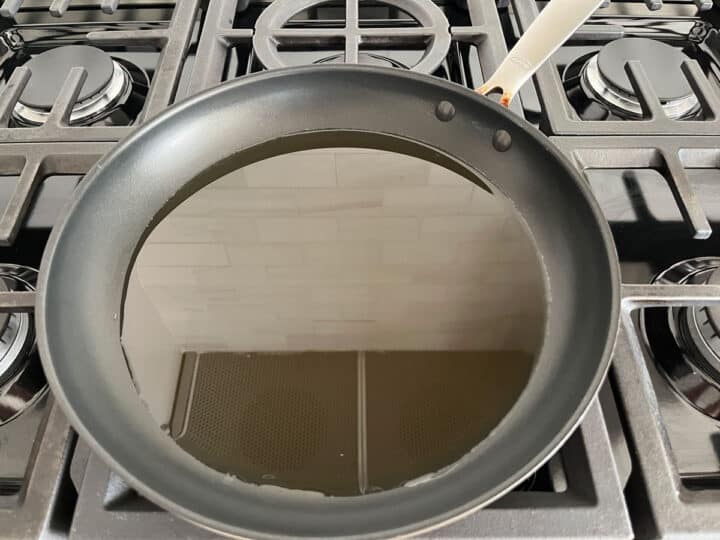
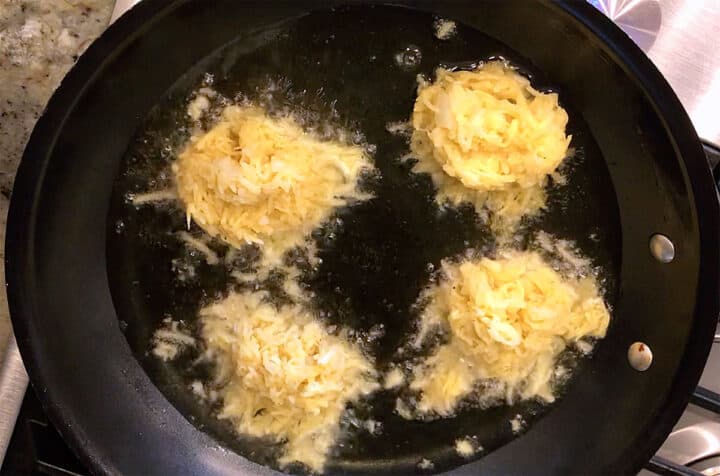
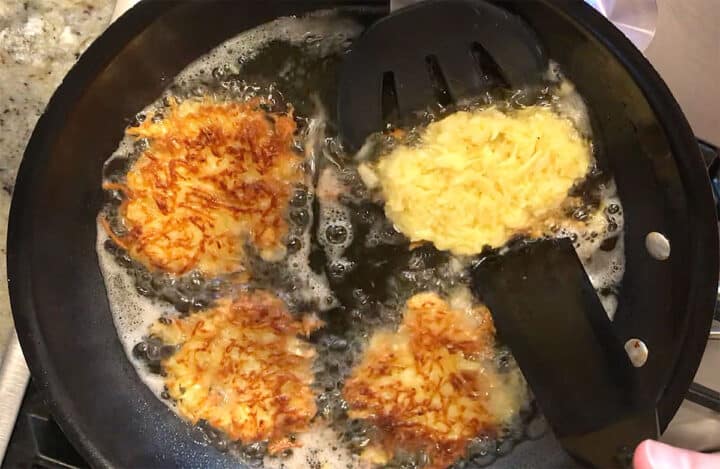
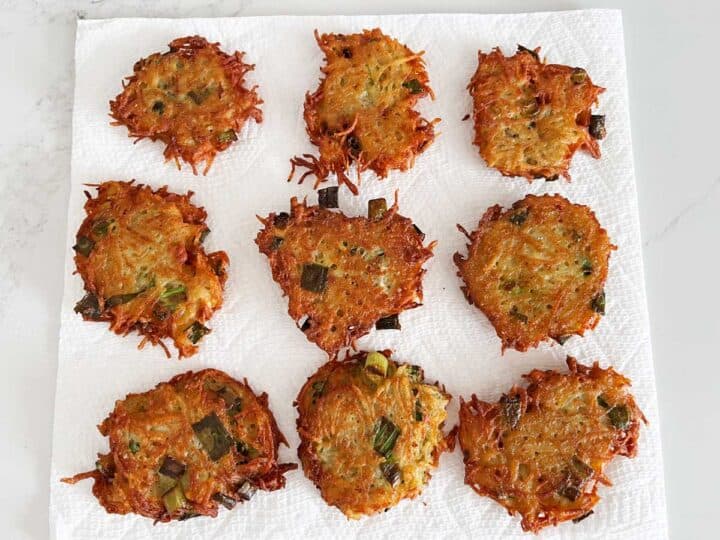
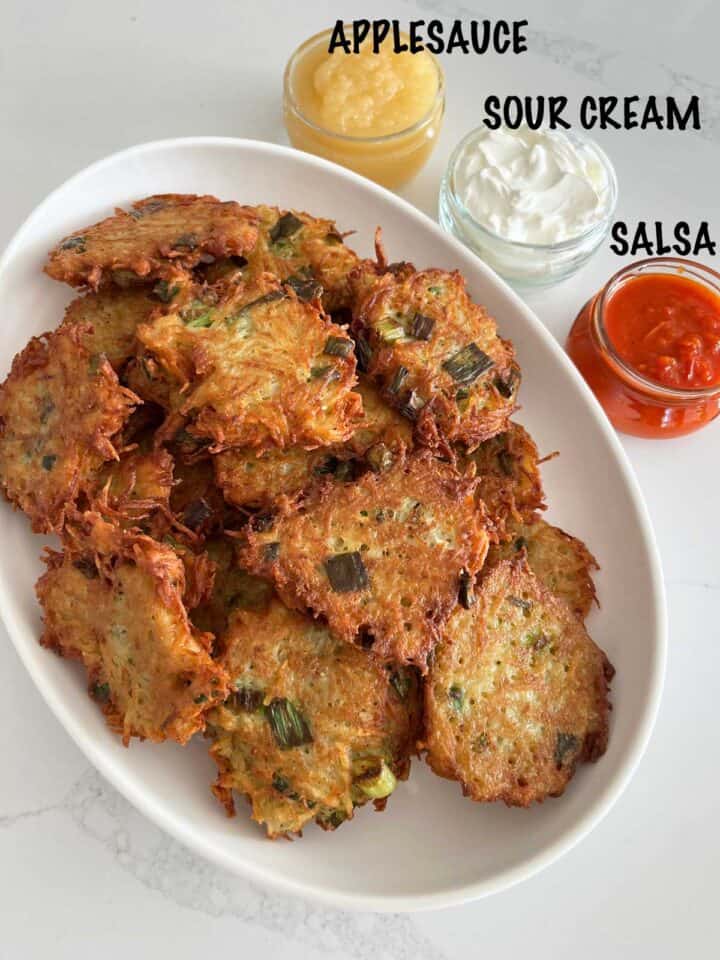
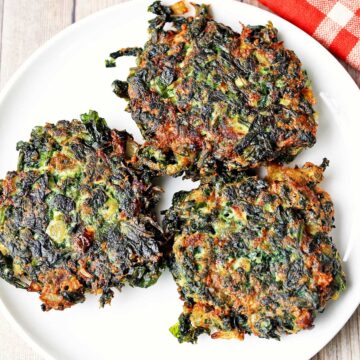
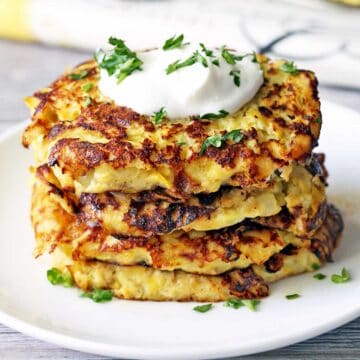
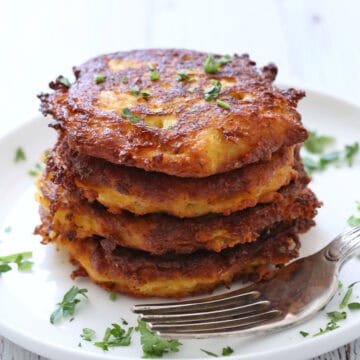
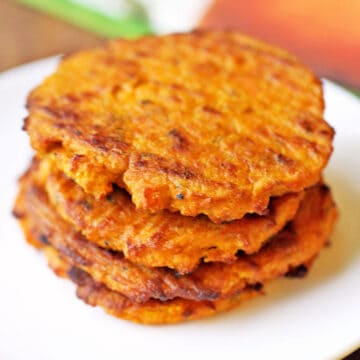
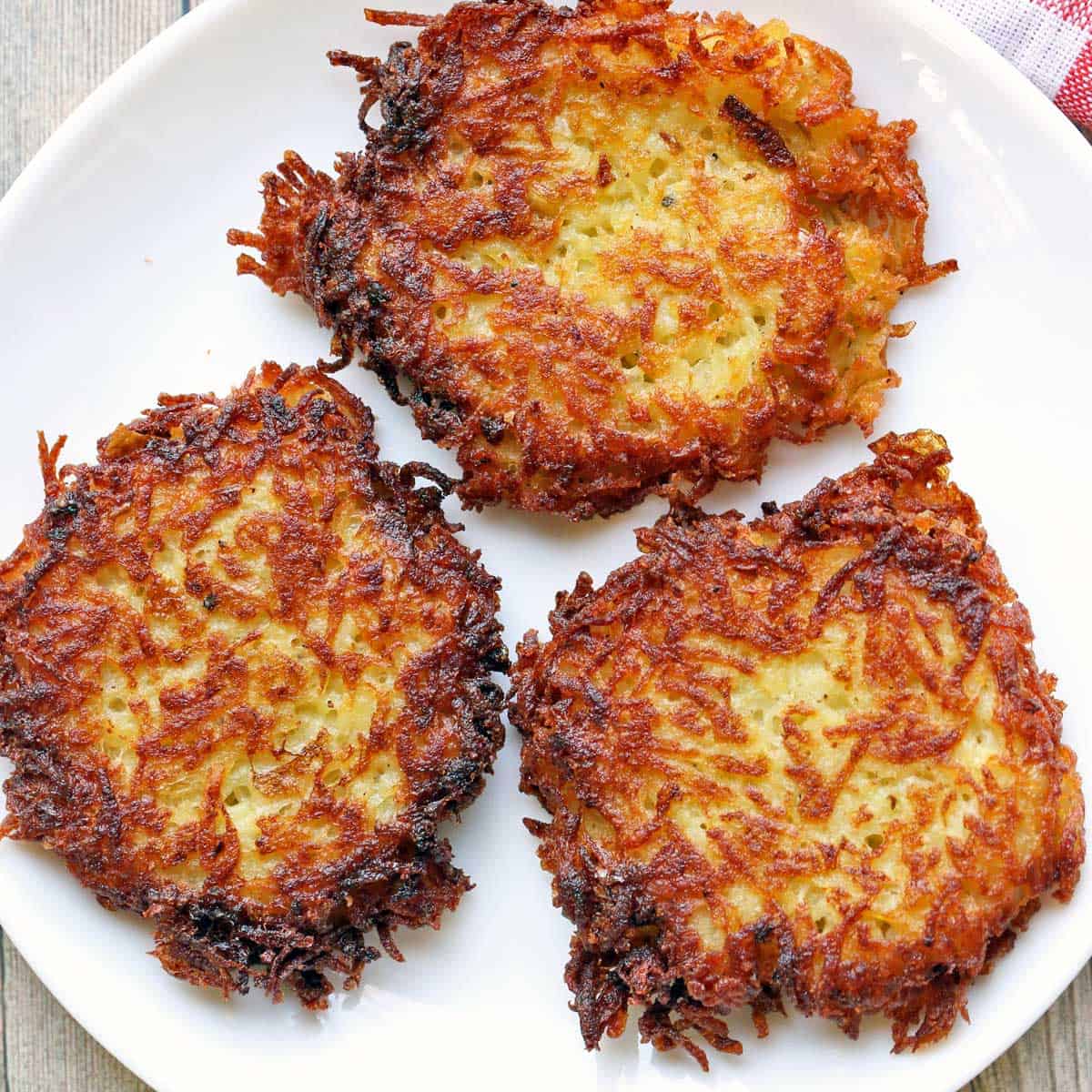
Barry says
Perfect. Crispy and delicious. These are the best latkes I ever made. Thank you, Vered! Happy Hanukkah!
Vered DeLeeuw says
You're very welcome, Barry! Happy Hanukkah. 🙂
Bracha says
so good! thank you for the tip on removing water. i used to add flour to my latkes. these are much better.
Vered DeLeeuw says
Glad you like this recipe, Bracha!
Bernard Smith says
We used your recipe and the latkes were delicious. But here's a thought: I use a thermometer whenever I pan fry or fry anything, and I would suggest that the temperature you want is 350 F. When you add four latkes to the pan, the temperature drops very quickly, very low, and for crisp latkes, you need the 350 F, so monitor the temperature constantly. Don't just assume because you have set the heat to medium high, the oil in the pan will stay there.
Vered DeLeeuw says
Thanks for the feedback. I've been making these latkes for at least 20 years now. I use the same method my grandmother always used, and haven't found the drop in oil temperature to be an issue. It rises back quickly and if you cook the latkes long enough on each side, until the lacy edges are brown, they turn out perfectly crispy.